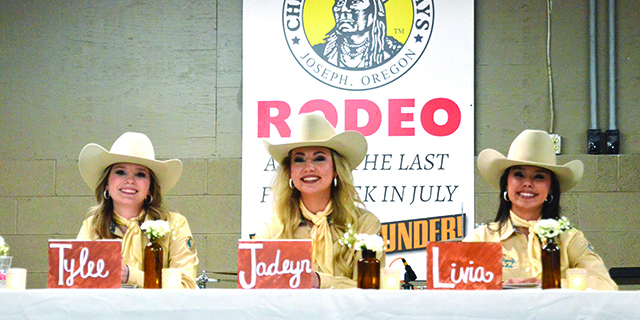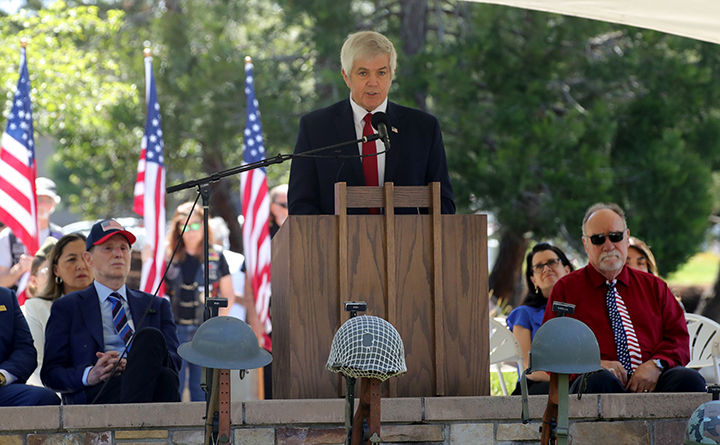EDITORIAL: Give veterinarians lead role in wolf attack inquiries
Published 5:00 pm Wednesday, July 13, 2011
Now that Oregon has a program in place to compensate livestock growers for wolves depredation of stock, its vital that the new mechanism be given a chance to work. Unfortunately, last weeks loss of a bull to an infection of undetermined cause did little to build growers confidence in the system.
To recap, the bull, part of Divide area rancher Denny Johnsons herd, was discovered in declining condition July 3, a day after Johnson had observed the animal running around and looking generally healthy. Concurrent with the down bulls discovery, Johnson found a 300-pound calf with a broken leg, an injury he believes was probably caused by a collision with an adult herd member. Its the kind of mishap readily associated with a predator-spooked herd.
On July 6 the bull died. The Oregon Department of Fish and Wildlife, employing established protocol, sent its local pair of wolf program coordinators to the ranch to investigate. The coordinators concluded by classing this case under the label, possible/unknown, with respect to wolves involvement, but their verbal statements were less nebulous. They said they were certain that wolves had not caused the bulls death.
Meantime, private veterinarian Dr. David Schaefer, whose own examination of the animal was geared primarily to saving it, if possible, and beyond that to reducing its suffering, had noted conditions consistent with canine attack. He suspected wolves, reasoning that it would take a fairly large mouth to spread itself around an 1,800-pound bulls upper leg. Owing to the complexity of determining this accurately, though, Schaefer conceded he wasnt certain. And he admitted that he couldnt rule out the remote possibility that the bulls fatal infection was systemic, rather than one brought on by a bite or other penetrating injury.
By comparison with the veterinarians informal but more involved analysis, ODFWs determination appeared cut-and-dried. Using their pocket-knives, coordinators literally cut their way through the carcasss hide to expose injured muscle, located a reasonably visible set of teeth marks from a suspected bite (coordinators found only one other suspected set, and it wasnt so distinct), and proceeded to measure the distance between the canine marks. At only an inch and an eighth, the measurement fell about half an inch short of the range for wolf canines spread. In the coordinators view, this piece of evidence cinched it: no wolf attack here, folks.
In an interview with the Chieftain later in the week, Russ Morgan, one of the coordinators, remarked on the relative ease of identifying wolf bites on an intact carcass. Too often, investigators have to deal with a carcass that has been partially consumed.
In a separate conversation, the Chieftain asked Dr. Schaefer about the conclusiveness of the canine-spread measurement. He didnt dismiss the evidence, but he cautioned that it may not accurately reflect the dimension in the biting animals mouth. In other words, tissue stretches and contracts, and the animal bitten on the run may, at rest, carry marks that are now somewhat compressed, giving a shorter measurement.
Again, its important to point out that Schaefers services werent about making the call on wolf involvement, so he wasnt prepared to dispute ODFW. Its fair to wonder, though, whether a veterinarian assigned that investigative role would have reached a different conclusion in the Johnson bull case.
We dont pretend to know that answer, but we believe there would be one important difference: a veterinarian, schooled in pathology and trained in other relevant areas not part of the wildlife biologists background, would render a more nuanced and more informative judgment.
According to Morgan, coordinators currently have the option of consulting an ODFW veterinarian. In our view, thats not a prominent-enough role for veterinary medicine, which should be given the lead in making determinations in suspected depredations by wolves. Ideally, the veterinarian would be independent of ODFW.
Stock owners already face a tough job in protecting their animals and detecting attacks quickly enough to stand a fair chance for compensation. Government wildlife management should offer nothing less than the best available resources for investigating suspected attacks.









